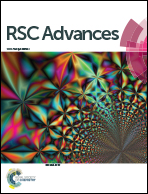First principles DFT study of interstitial hydrogen and oxygen atoms in the MAX phase Ti2AlN
Abstract
MAX phases are ternary metal carbides and nitrides with multi-layered crystal structures and mixed metallic-covalent bonding. They have very good thermal, chemical, and mechanical properties which make them potentially suitable as corrosion protection coatings for high-temperature energy-conversion devices such as solid oxide fuel cells. To assess the capability of MAX phases as diffusion barriers for hydrogen and oxygen, we investigate absorption and migration of interstitial H and O atoms in the MAX phase Ti2AlN by means of first-principles calculations based on density functional theory. The resulting calculated formation and migration energies indicate that a Ti2AlN coating can act as a protective diffusion barrier for both oxygen and hydrogen, but according to two different mechanisms.



 Please wait while we load your content...
Please wait while we load your content...